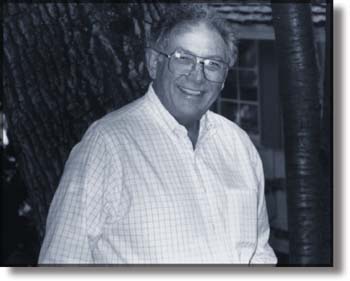The Gripes of Wrath
John Steinbeck once lived and breathed here, built a bookcase and everything. So much for the best-laid plans of Joel Gambord, new city councilman
By Michael Learmonth
ABOUT TWO-MILES up a winding, 12-foot-wide ribbon of pavement in the Monte Sereno hills, John Steinbeck pecked out "The Grapes of Wrath" and "Of Mice and Men" in a little cottage he called home for 18 months.
Only after I turn down the steep driveway, do angles of the house's white-planked walls and shake roof appear on a hillside just below the road, peeking between the limbs of oak trees.
Monte Sereno City Council member Joel Gambord lives here now, in the most hallowed historical building in Monte Sereno. He sometimes says he should be able to tear down the Steinbeck house if he wants to. For now, he's prettying the house up and at the same time bulldozing the law that protects historical buildings.
Gambord mounted an attack on Monte Sereno's preservation law shortly after winning his seat in the November 1996 election, about 13 months after the brunt of the law came down on Gambord himself.
The new councilmember steps outside onto his brick walkway, in pressed khaki slacks and a sports shirt open at the collar, and meets me halfway to the house. He apologizes for the museum like living room: His wife hasn't quite finished decorating after a monumental remodeling that started more than a year ago, the same project that caused historical huffing by city officials.
The place looks fine to me. I wipe my boots before stepping on the cherry wood floor and Gambord explains that his wife is still waiting for just the right fabric to reupholster the new wingback chairs and the sofa. The dining room that once was a large part of Steinbeck's cottage stands unused because the chairs haven't arrived for the nine-foot dining table.
My host leads a winding tour through the 4,500-square-foot house, interrupted only when he checks phone messages from the decorator and takes business calls about rental properties the former developer still manages from his home office. The tour ends in the room that used to be Steinbeck's tiny guest house, before the main house expanded to its current size.
"This is where we had the big hassle with the city," Gambord says. Gambord had discovered some rotten boards on the porch, he says, and pulled them off. The city halted his project, on grounds that he lacked permission to work on the historical porch. Gambord's project was delayed. He endured a parade of public officials inspecting the house. A historical commissioner searched his trash for pieces of siding. City Manager Carolyn Lehr sent police on surprise night time inspections to make sure the stop-work order would be obeyed.
All of this Gambord endured with gritted teeth.
Gambord maintains all the work he did was legal. But in the end, he had to promise to preserve two original guest house windows, to make up for the destroyed siding. He also agreed to save a bookcase that Steinbeck built and use redwood planks in place of the siding removed.
Gambord objected to all this because the house is not important, he says, the place is important. When the property was added to the National Register of Historic Places the extensively altered house was criticized by the State Office of Historic Preservation. When Steinbeck slept here, it was just an 800-square-foot cottage.
Now, Gambord believes the law should be applied only to house owners who volunteer their homes for preservation status. Currently, any citizen can nominate a house for the list, and if the council decides to preserve a house, the council controls its destiny, right down to what color paint can be used or what window frames must be saved or discarded.
Apparently, Gambord is not shouting in the wilderness. In the recent election, he garnered 716 votes, more than any other candidate in the tiny West Valley hamlet. And right after he raised the idea of preservation on the honor system, two other owners of houses recently nominated for the historical inventory asked to be left out.
Council member Dorothea Bamford openly disagrees. If requirements are voluntary, few will volunteer, she has said, and old houses will be destroyed.
After the tour, Gambord makes coffee and spreads out on the kitchen table, a folder of documents about his house and the restoration. He doesn't like his house to come into the debate about historical preservation, he says, because it's not a personal thing. But ask him why he wants to rearrange the law, and he invariably circles back to September 1995, when the city clamped down on his plans.
"It's taking away some freedom from people in the use of their property," Gambord says of the preservation law. "You can't change a light fixture. You can't change the color of the paint."
He pounds his fist emphatically on the table.
"Why should I have to go through that?"
[ Metro | Metroactive Central | Archives ]
This page was designed and created by the Boulevards team.

Photo by Christopher Gardner
From the January 9-15, 1997 issue of Metro
Copyright © 1997 Metro Publishing, Inc.
![[Metroactive News&Issues]](/gifs/news468.gif)